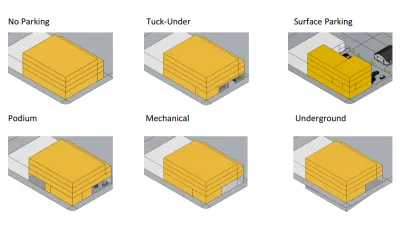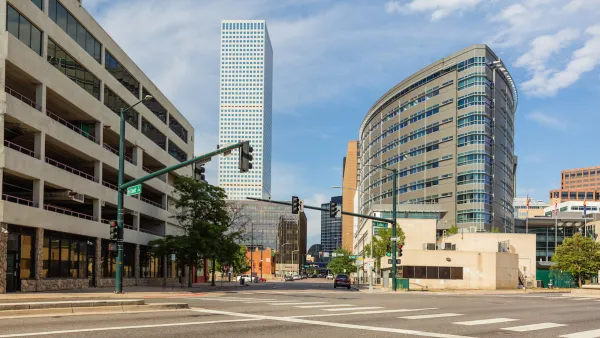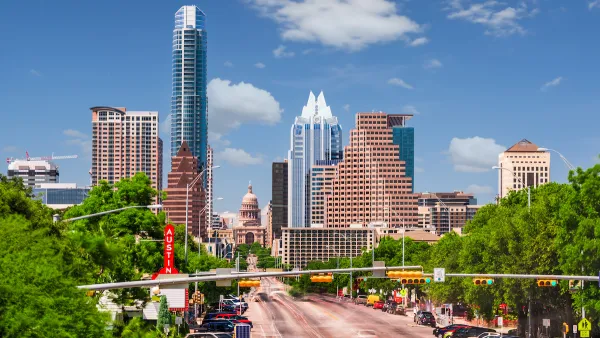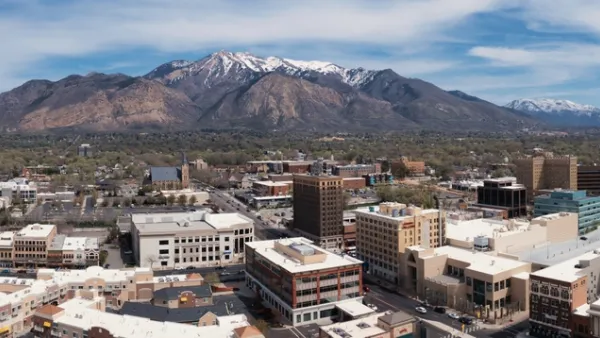Alan Durning details the negative effects that parking requirements have on housing affordability.

How do parking requirements raise rents? They do it in five ways, some of which affect all of the housing market and some of which only affect parts of it, according to columnist Alan During. Contributor Todd Littman summarizes the key impacts of parking requirements on rents:
1. More Costly Housing. Parking quotas drive up construction costs. High parking costs for construction effectively exclude new, less-expensive apartments from the market. There’s no way you can legally build your no-parking $800-a-month apartments, nor can anyone else, anywhere in town. The whole apartment market will be missing its bottom end.
2. Less Housing. Parking quotas constrain the supply of dwelling units, particularly of modest, economical ones, which causes their price to rise. You may end up building only 25 apartments, rather than 50. The same goes for every other builder in the city. Fewer new apartments mean more competition for all apartments. Rents go up.
3. Building Conversions Blocked. Parking quotas often make it prohibitively expensive to adapt buildings for other uses. Developers cannot convert vacant warehouses into lofts, or aging office blocks into condos, unless they somehow shoehorn floors of parking into the historic structures. This effect may keep fewer apartments off the market than does effect 2 (above), but in older cities, it can still keep thousands of apartments from getting built.
4. Dispersed Housing. By suppressing the number of apartments on each city lot (see 2 and 3), quotas force housing demand to spread outward across the landscape. In a word: sprawl, which raises travel distances and commuting expenses. Instead of 50 apartments on your in-city lot and many others like it, there may be only 25. Apartment hunters will have to go farther afield, increasing their cost of living, if not their rent.
5. Billing Non-parkers. Parking quotas shift the cost of storing vehicles from those vehicles’ owners into the rent of non-owners. By flooding the market for parking, quotas make it impossible to recoup the full cost of parking by charging its users. You can’t charge $250 a slot, because the neighborhood is awash in mandatory parking stalls. Fortunately for you, the same parking quotas that have flooded the parking market are starving the apartment market, making it possible to charge higher rents. This effect does not raise the rent on average beyond what effects 1, 2, and 3 do, but it does shift the cost of storing vehicles from car owners to non-owners. Even tenants who do not use parking pay for it.
These five effects interact and reinforce one another. They knock the bottom off of the apartment market, pushing working-class people to double up or commute longer distances. They raise the rent for everyone, driving up the cost of living while lowering the price of parking. And they shift parking costs to those who don’t use it.
Author Alan Durning reports that the case study in based on scenario analysis by the Portland Bureau of Planning and Sustainability that uses real-estate planning tools, and illustrates the way parking requirements raise the price of housing.
FULL STORY: Apartment Blockers" Parking rules raise your rent.

National Parks Layoffs Will Cause Communities to Lose Billions
Thousands of essential park workers were laid off this week, just before the busy spring break season.

Retro-silient?: America’s First “Eco-burb,” The Woodlands Turns 50
A master-planned community north of Houston offers lessons on green infrastructure and resilient design, but falls short of its founder’s lofty affordability and walkability goals.

Delivering for America Plan Will Downgrade Mail Service in at Least 49.5 Percent of Zip Codes
Republican and Democrat lawmakers criticize the plan for its disproportionate negative impact on rural communities.

Test News Post 1
This is a summary

Test News Headline 46
Test for the image on the front page.

Balancing Bombs and Butterflies: How the National Guard Protects a Rare Species
The National Guard at Fort Indiantown Gap uses GIS technology and land management strategies to balance military training with conservation efforts, ensuring the survival of the rare eastern regal fritillary butterfly.
Urban Design for Planners 1: Software Tools
This six-course series explores essential urban design concepts using open source software and equips planners with the tools they need to participate fully in the urban design process.
Planning for Universal Design
Learn the tools for implementing Universal Design in planning regulations.
EMC Planning Group, Inc.
Planetizen
Planetizen
Mpact (formerly Rail~Volution)
Great Falls Development Authority, Inc.
HUDs Office of Policy Development and Research
NYU Wagner Graduate School of Public Service





























